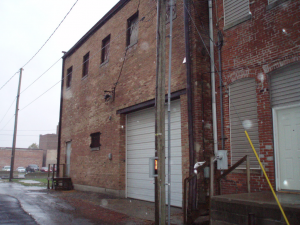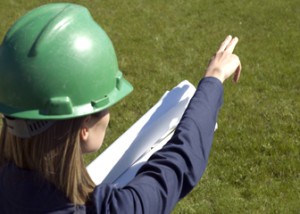The Environmental Site Assessment is Your Friend
An Environmental Site Assessment (ESA) is your friend if you are purchasing a commercial property.
Background
A commercial property’s value will plummet if it has environmental hazards. These hazards increase the buyers and lenders risk. Unknown environmental problems are a far greater source of loss to buyers and lenders than fire, vandalism, theft, or title risks. 
An Environmental Site Assessments (ESAs) is an important tool for commercial real estate transactions. ESA’s establish protection from potential legal liability associated with purchasing a commercial property that has environmental contamination. Before purchasing a commercial property, it is recommended that a professional environmental consulting firm, such as Turn-Key, prepare a Phase I Environmental Site Assessment. If a commercial property is purchased without a Phase I ESA and the property has environmental problems, the new owner will become responsible for those problems. Managing and remediating environmental problems can be costly. To avoid assuming the environmental risk for the property, the Envrionemtnal Site Assessment is your friend.
There are three levels of Environmental Site Assessments
- Phase I ESA provides a historical picture of a commercial property and any potential environmental problems that property may have
- Phase II ESA takes the study a step further. Phase II’s identify and characterize the extent of any environmental problem
- Phase III ESA involves site remediation and clean up.
The purpose and objectives of Phase I, Phase II and Phase III ESA are different but interrelated.
What is a Phase I Environmental Site Assessment?
A Phase I ESA is an investigation into the current and past uses of a property in attempt to identify any environmental problems, known as any recognized environmental conditions (RECs). A REC is the presence or likely presence of any hazardous substances or petroleum products in, on, or at the Property, due to any release to the environment; under conditions indicative of a release to the environment; or under conditions that pose a material threat of a future release to the environment.
What is a Phase II Environmental Site Assessment?
Phase II investigations are conducted to evaluate the presence or likely presence of a contaminant often revealed by the Phase I. These investigations typically include soil and/or groundwater sampling, but they can vary widely in scope. Sample collection may involve simple grab samples; use of a hand auger, drill rig, or GeoProbe; and/or installation of monitoring wells; and may require more than one sampling event.

When is a Phase II ESA necessary?
Phase II investigations are often, but not always, conducted in response to the identification of recognized environmental conditions (RECs) by a Phase I ESA. Phase II ESAs may be conducted to determine potential environmental liability, human health risks, and business environmental risk. Phase II ESAs define the scope and breadth of the environmental risk. Depending on the results of a Phase II ESA, more than one sampling event may be necessary. This may be necessary in order to delineate the extent of contamination or to reduce the level of risk.
What is a Phase III ESA and when is it necessary?
A Phase III ESA, also known as Remediation Investigations/Feasibility Studies, is a necessary step in the environmental remediation process of environmental contaminants from a property. Phase III ESA’s are broad in scope and specific to the contamination present. The remediation techniques employed are determined by the severity of the contamination. It may include excavation and disposal of contaminated soil; pumping and treating contaminated groundwater; storage tank removal; or disposal of drums.
A Phase III ESA takes the information from a Phase II and determines the extent of contamination of the property. A Phase III ESA develops a plan of remediation, which needs to have the approval of local, state and federal environmental agencies. The plan will detail a full scope of options for all parties and include time and costs involved with cleanup. Once the plan is approved the remediation of the site can begin.
To learn how we can help plan your needed Phase I, Phase II, Phase III ESA, please contact us.


